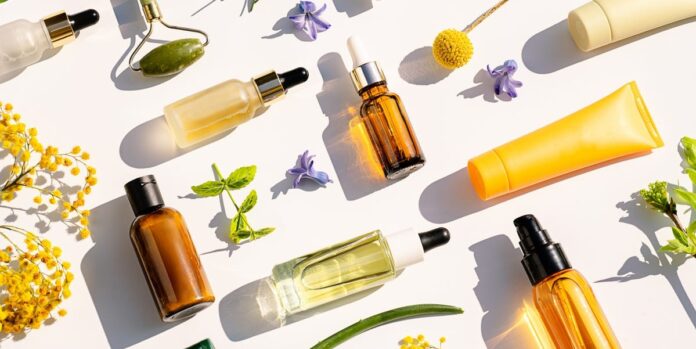The beauty industry is undergoing a quiet revolution, shifting away from sterile labs and towards the very source of life: the farm. This movement, dubbed “agricosmetics,” isn’t just another buzzword; it represents a fundamental rethinking of how skincare is made, sourced, and perceived. From a historic wine estate in France to biodynamic farms in Italy and the American heartland, brands are now controlling the entire production chain – from seed to bottle – to deliver what they claim is purer, more potent, and more sustainable beauty.
The Core Concept: Bridging Agriculture and Aesthetics
The term “agricosmetics” originated with the Italian brand OWAY, but the idea is older than that. It’s a holistic approach that integrates agricultural tradition with scientific innovation, emphasizing the connection between healthy soil and healthy skin. Instead of relying on synthetic ingredients, these brands cultivate their own medicinal plants, harvest at peak potency, and repurpose agricultural waste into high-value cosmetic ingredients. The key isn’t just what goes into the product, but where it comes from and how sustainably it’s produced.
Pioneering Brands and Their Approach
Several companies are leading the charge. The Perrin family, owners of the renowned Château de Beaucastel in France, exemplify this trend. They transform leftover grape pulp – rich in antioxidants – into a luxury skincare line, Beau Domaine. This isn’t just about reducing waste; it’s about leveraging the natural resilience of the vine to benefit skin health.
OWAY, based in Italy, goes even further by cultivating its own biodynamic farm, Ortofficina, to grow rosemary, sage, and thyme. Meanwhile, FarmHouse Fresh in Texas prioritizes US-grown ingredients and runs a farm animal sanctuary funded by their sales, promoting a closed-loop system. These brands aren’t just making skincare; they’re building ecosystems.
The Science Behind the Claims
The movement isn’t purely aesthetic. Beau Domaine has spent two decades collaborating with scientists to develop patented ingredients like GSM10, derived from Grenache, Syrah, and Mourvèdre grapes, and ProGR3, a blend of resveratrol, apigenin, and catechin. Pre-clinical tests show these ingredients protect against environmental damage and preserve collagen. Research supports these claims: studies confirm plant polyphenols have anti-inflammatory, antioxidant, and anti-allergic effects on skin.
FarmHouse Fresh also focuses on antioxidant-rich microgreens and herbs, while dermatologists like Dr. Zalka emphasize that natural ingredients, when backed by clinical testing, can offer enhanced efficacy. However, she cautions against blindly trusting “natural” labels, as the FDA doesn’t regulate this term. Transparency and verified claims are crucial.
Sustainability, Greenwashing, and the Future
The agricosmetics movement promises transparency in an industry often accused of greenwashing. Brands like OWAY prioritize renewable energy, eco-friendly packaging, and waste reduction. FarmHouse Fresh champions local sourcing, while Beau Domaine is working toward more sustainable packaging and production.
However, consumers must remain vigilant. Vague sustainability claims are meaningless without specifics. Look for third-party certifications (USDA Organic, Rainforest Alliance, Leaping Bunny) to verify a brand’s commitment to natural materials and ethical practices. The key is detailed policies, sustainability reports, and honest sourcing.
Ultimately, agricosmetics represents a shift toward valuing the origin and process behind beauty products. Consumers are increasingly demanding transparency and accountability, and these brands are responding by controlling the entire supply chain – from seed to serum. Whether this is a fleeting trend or a permanent evolution remains to be seen, but one thing is clear: the future of beauty may well be rooted in the soil.























